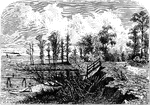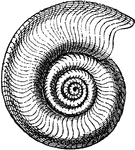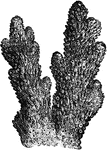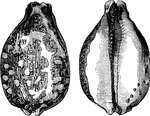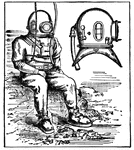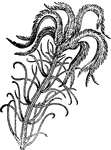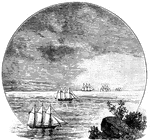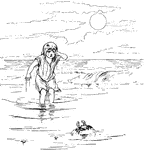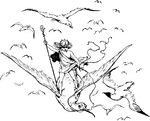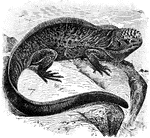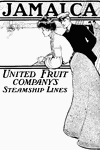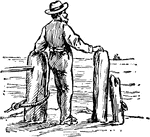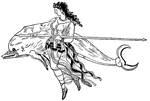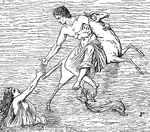Section of Coral Island of an Atoll
"represents a section of an island, from the ocean (o) to the lagoon (l). On the ocean side, from o…
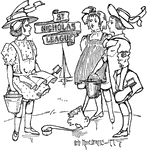
Girls on the Beach
Three girls on the beach with buckets and shovels. A sailboat passes by in the background.
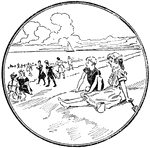
Relaxing on the Beach
Two young people sitting on the beach. Others are walking along the shore. There is a sailboat in the…

Burnside Expedition
"The Burnside Expedition- melancholy deaths of Colonel J. W. Allen, Surgeon Waller and the Second Mate…
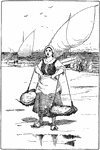
Woman Catching Live Sardines
This image depicts a woman catching live sardines in San Sebastian, Spain.
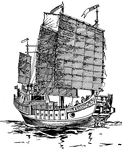
Chinese Junk
A Junk is a native Chinese vessel. It is a clumsy craft, with very high forecastle and poop, and pole…

Cirolana Microphthalmia
Flabellifera are a type of isopod. Their bodies end in a tail fan, made by the last pair of appendages…
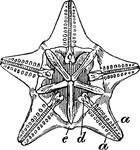
Clypeastrid
A family of irregular sea urchins, flattened into a discoidal or shield like shape, with a mouth central…
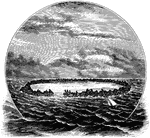
Coral Island
The reef forming the island is of limestone, derived form countless skeletons of minute polyps that…

Snipe Eel
"An eel-like fish, Nemichthys scolopaceus; any member of the Nemichthyidae. The snipe eel attains a…

Turbine Engine
The inner workings of the Carmania. A description of how the ship gets power in order to move on the…
Scabbard Fish
Lepidopus caudatus. "1. A fish of the family Lepidopodidae, Lepidopus caudatus,of the Mediterranean…
Fort Taylor
"Fort Taylor, Key West, Fla. Key West, the most western of the Pine Islands, is about sixty miles southwest…

Fucus
Fucus is the generic name of various species of brown seaweed which form the main vegetation of rocky…
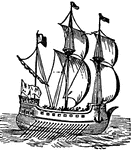
Galley (ship)
A Galley is a low, flat-built vessel furnished with one deck.It was primarily employed by the Romans,…
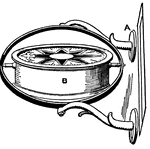
Gimbals (Diagram)
A gimbals is a contrivance designed to keep a marine compass, chronometer, lamp, or other instrument…
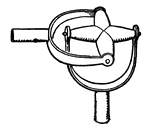
Gimbals (Joint)
A gimbals is a contrivance designed to keep a marine compass, chronometer, lamp, or other instrument…
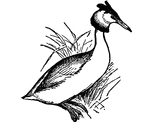
Great Crested Grebe
The Great Crested Grebe (Lophæthyia cristata) is a fresh-water, migratory, diving bird of the family…
Grenadier
Grenadiers or rattails (less commonly whiptails) are generally large, brown to black gadiform marine…
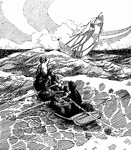
Henry Hudson
As part of a mutiny, Henry Hudson is seized and set adrift along with the loyal carpenter and the sick…
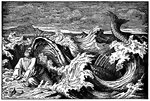
Jonah is Swallowed by a Great Fish Sent by God
"And Jehovah prepared a great fish to swallow up Jonah; and Jonah was in the belly of the fish three…

Sea Lamprey
A lamprey is an animal which, though often regarded as a fish, differs from a fish in the absence of…

Limnoria Lignorum (Flabellifera)
Flabellifera are a tribe of isopods. Their bodies end in a tail fan, made by the last pair of appendages…
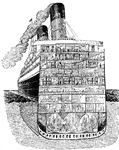
Ocean Liner
The Carmania was a ship built in 1905 built in Britain by John Brown & Company. She was designed by…
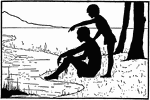
Man Sitting & Child Standing Near Lake
An illustration of a man sitting on the shore of a lake and a child standing behind him pointing into…
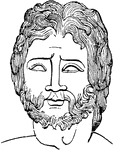
Head of Neptune
"The following cut from an antique in the British Museum, represents the head of Neptune. The hair rises…
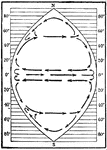
Ideal Ocean Circulation
Diagram showing the circulation in an ideal ocean extending from pole to pole and covering one fourth…
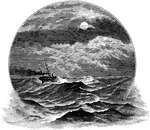
Ocean Wave
Waves are swimming motions of the water, caused by the action of the wind. Their height and velocity…

Offshore Bar
Diagram illustrating the development, migration, and complete destruction of an offshore bar and the…
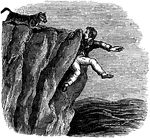
Out of the Frying-Pan into the Fire
"See here a man who doth true courage lack, / He flies apace - a wolf is on his track: / Nearer he comes…

Peanut Worm - Interior Anatomy of Larva
Sipunculus nudus. A species of unsegmented marine worm, commonly called the peanut worm. "B, Larval…
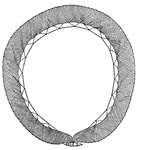
Purse-seine
A 'purse' seine is a form of fishing net that is paid out around a school of fish, like a cylinder with…

Red Whelk
Fusus antiquus. "...a division of prosobranchiate gastropods, having the lip of the shell notched, canaliculate,…
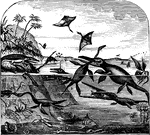
Reptiles
In this age the animals and plants begin to resemble existing species. The age is characterized mainly…

Ripple Marks
Diagram illustrating the forms of ripple marks and of the reverse impressions of the same.
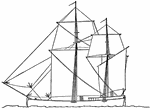
Fishing Sailboat
A double mast vessel known as a ketch. Meant to be used as a fishing boat but could also be used for…
